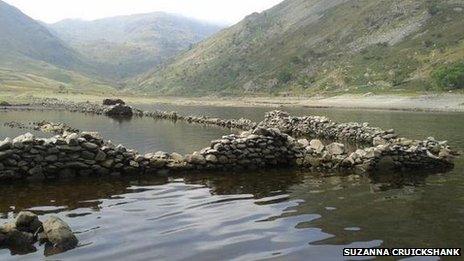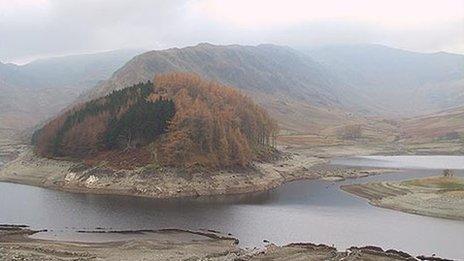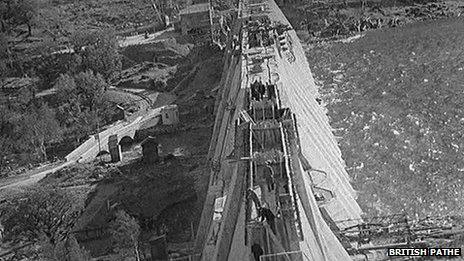Flooded village of Mardale emerges after dry weather
- Published

Water levels have fallen because of a dry start to September
A village flooded in the 1930s to create Haweswater reservoir in Cumbria has started to reappear as water levels recede because of low rainfall.
Villagers were moved out of Mardale which disappeared when the valley was filled with water in 1939.
Stone walls of former field boundaries can be seen with the falling water level.
The current reservoir level is 57.7% compared with 75.2% in a normal year, United Utilities said.
Met Office spokesman Dan Williams said the reading from the Shap weather station, which is about eight miles away, showed there had been 7.6mm of rain so far in September with the average for September for that weather station standing at 128.3mm.

The walls have been seen in periods of dry weather over the years
The reservoir was created to provide for the water needs of Manchester and involved the construction of a dam, which was started in 1929.
Once completed the reservoir took almost a year to fill.
Many of the buildings in the village were dismantled and bodies buried in the churchyard were exhumed and moved elsewhere.

Water levels start to rise as Haweswater dam is built